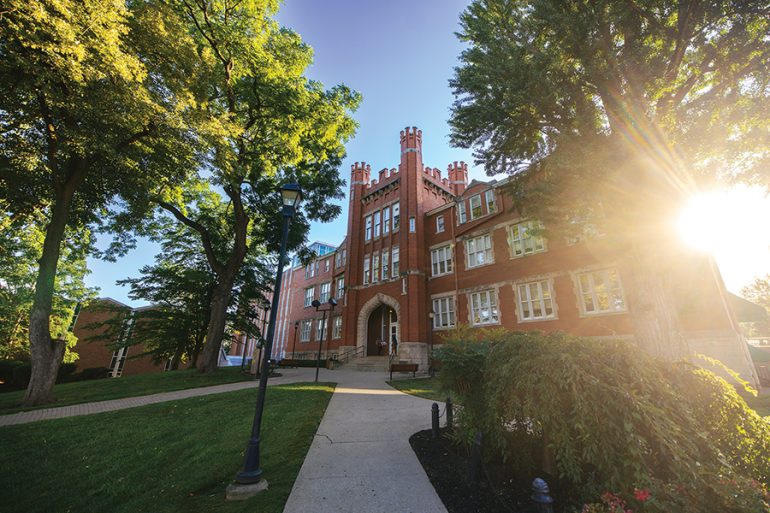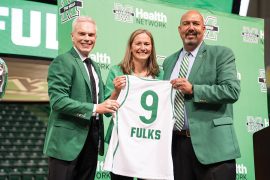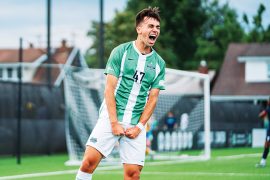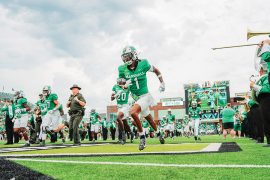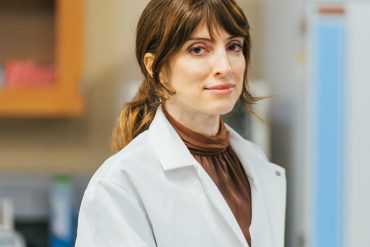From beloved favorites to new wonders, here’s our guide to the must-see sights across Marshall University’s Huntington campus.
By Rebecca Stephens & Jean Hardiman
MU 72 | FALL 2024
From the timelessness of Old Main to the brand-new Brad D. Smith Center for Business and Innovation, each landmark on Marshall University’s campus offers a unique glimpse into the university’s rich heritage and forward-looking vision. Whether you are a campus regular, are visiting for a special occasion or have yet to revisit campus since graduation, Marshall’s commitment to tradition, progress and community makes campus a sight to see.
Old Main
Built between 1868 and 1908 through a series of connected buildings, Old Main is the most prominent landmark and most photographed building on Marshall’s campus. Home now to the university’s administrative offices, Honors College and College of Liberal Arts administrative office, Old Main has witnessed more than a century of history and stands as a testament to the university’s resilience and evolution.
Did you know?
In the basement of Old Main is the Archaeology and Ethnography Lab, which is managed by the Department of Sociology and Anthropology.
This lab houses thousands of artifacts from important prehistoric sites in West Virginia, including hunting, cooking and sewing tools, games and jewelry. The ethnographic collection contains hundreds of diverse everyday and ceremonial objects spanning the globe, like masks, musical instruments, dolls and clothing. Though not open to the public, visitors can request a tour of the lab from Archeology Lab Director Marion Coe.
Marshall Libraries
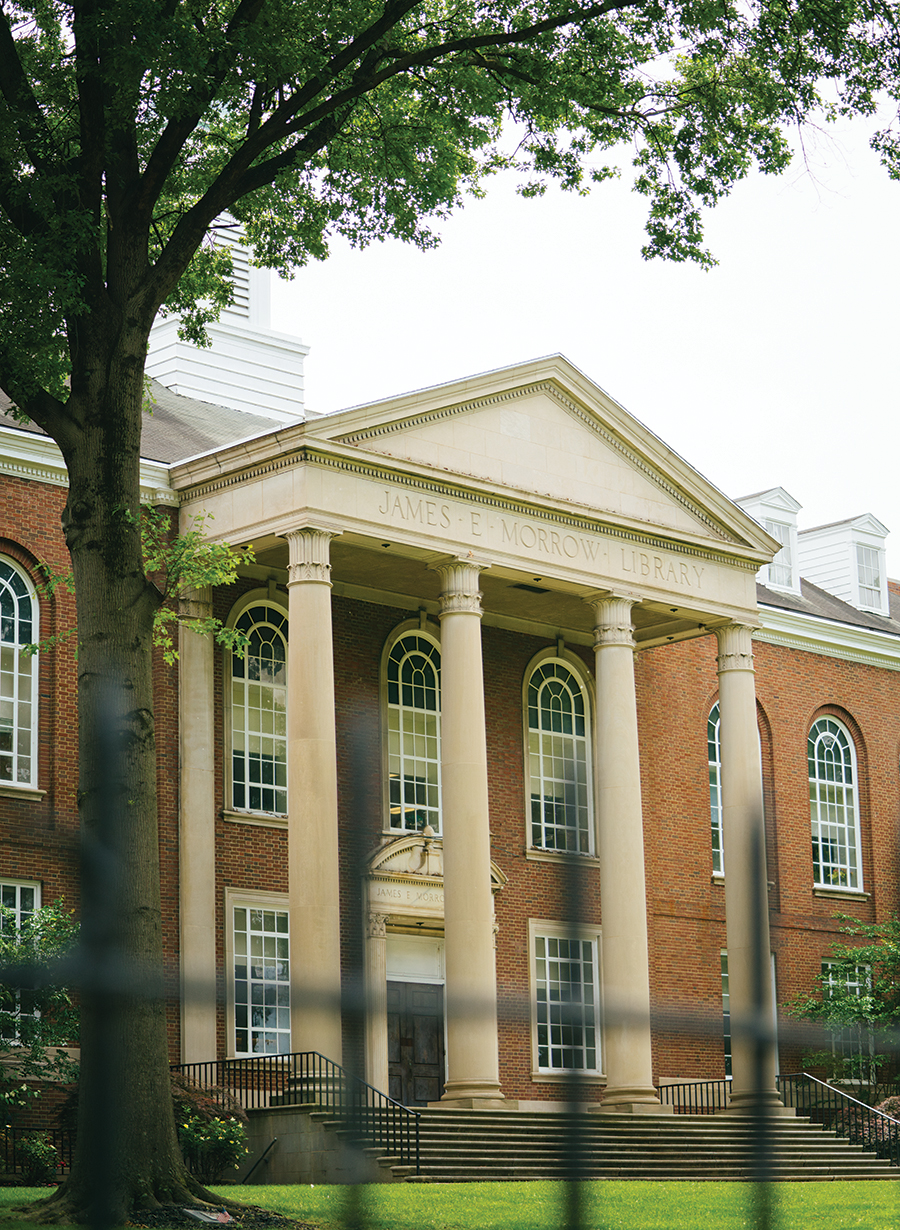
Marshall is fortunate to have two libraries on campus. The oldest is Morrow Library, which opened in the 1930s and houses the Morrow stacks and Special Collections. For history buffs, Morrow is the keeper of Marshall history and is open to the public.
Did you know?
On the top tower of Morrow Library are working bells that are electronically programmed to chime on the hour and play randomized holiday music during December. They were donated in 1983 by C.I. and Marie A. Thornburg.
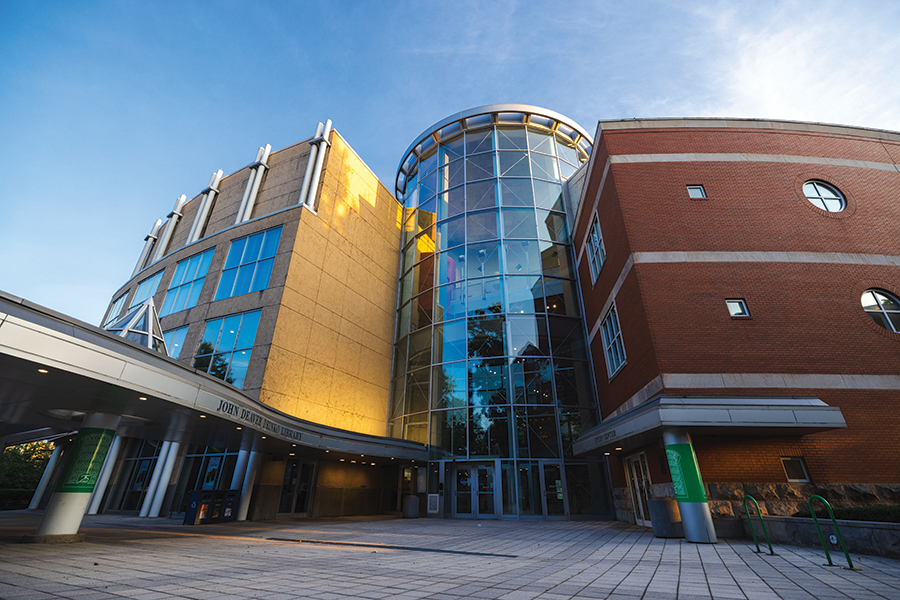
Drinko Library opened its doors in 1998 and is the modern counterpart to Morrow. Drinko hosts study rooms, conference rooms, the Writing Center and the IT department, as well as a new Digital Creation Studio. With the first floor being open 24 hours five days a week, with additional Saturday and Sunday hours, current students have the perfect place for a late-night study session.
Did you know?
One of the architectural features of Drinko Library is the exterior archway that faces Hal Greer Boulevard, which was preserved from the former Northcott Hall and incorporated into the designs for Drinko Library.
Brad D. Smith Center for Business AND Innovation
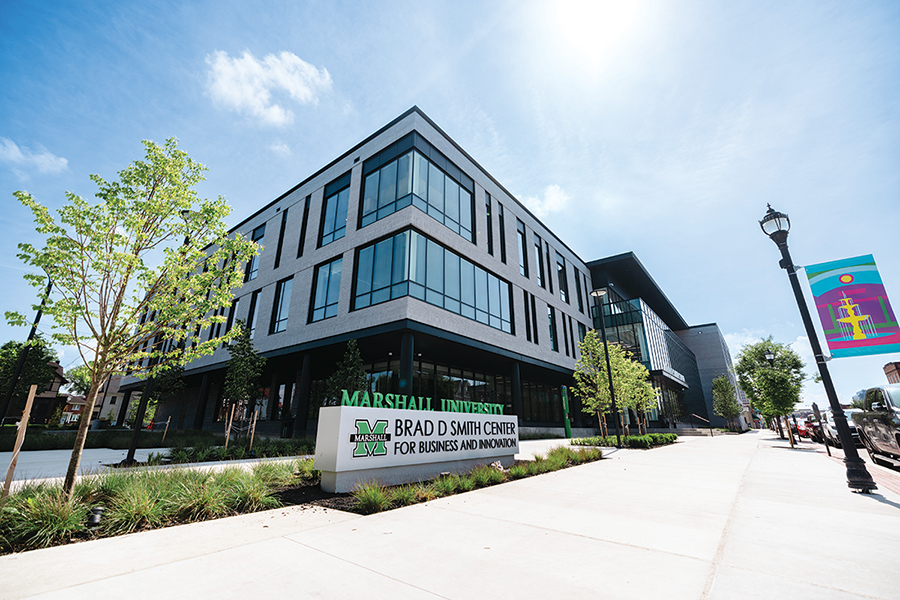
The Brad D. Smith Center for Business and Innovation, which opened in the spring of 2024, houses classroom space, a forum and auditorium, computer and finance labs, office space, meeting rooms and study spaces for students. It is designed to be the center for economic development in the region, giving Marshall students access to a first-class education in a dynamic environment that enhances learning and collaboration.
Did you know?
It has its own stock ticker and is the first building on campus that has T1V ThinkHub Education technology, which includes an instructor station and student stations that can work both independently and collaboratively, connecting everyone’s devices. The facility’s finance lab will house 12 Bloomberg terminals that students will utilize in learning wealth management, with plans to host a student investment fund to help them get hands-on investment training. Also in this new facility are hundreds of electrical outlets. They’re on everything from the desks in the classrooms to the furniture in the forum.
Memorial Fountain
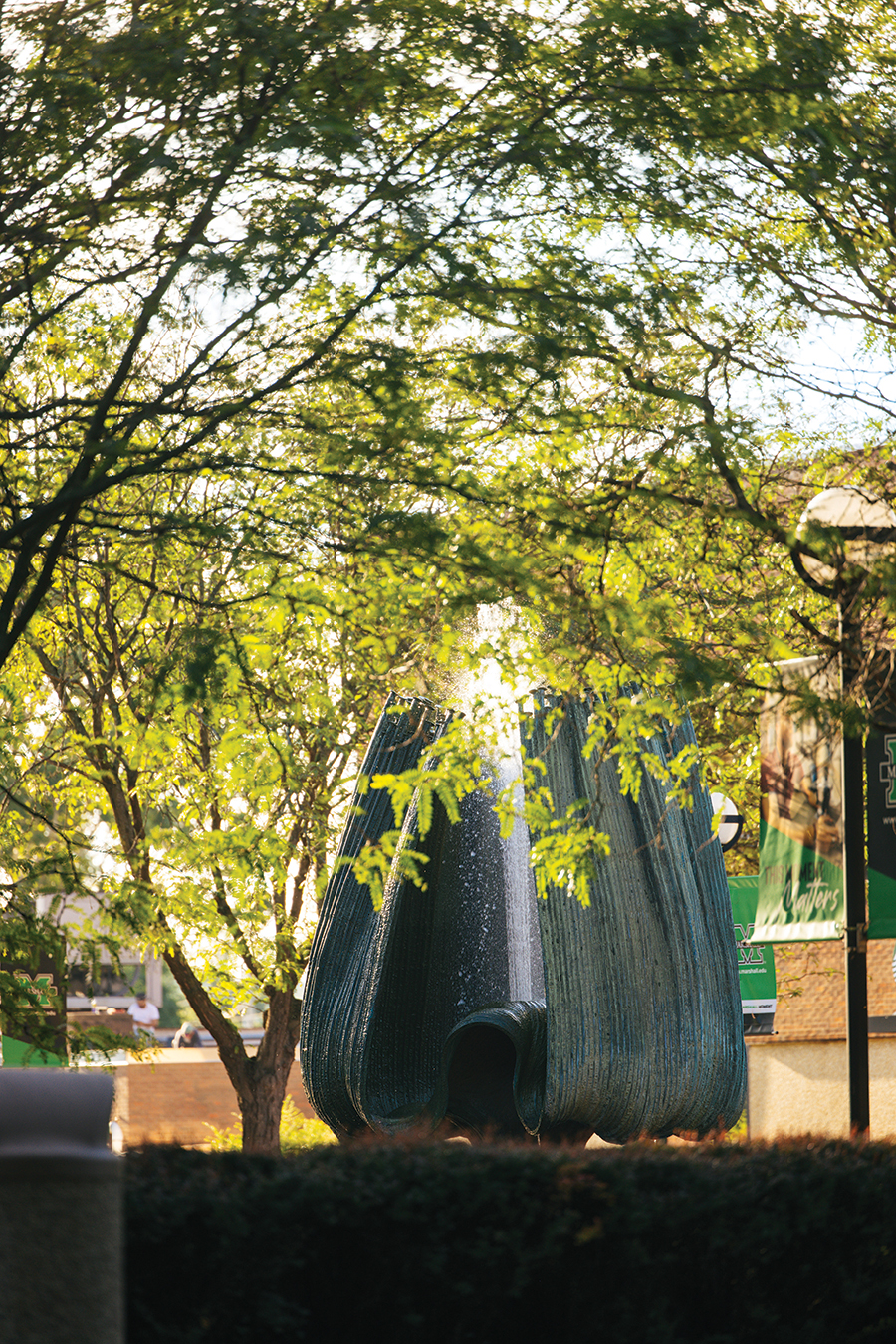
Since its dedication in 1972, the Memorial Fountain has served as the heart of the university and the site of the Memorial Fountain Ceremony held annually on Nov. 14. The ceremony commemorates those lost on Nov. 14, 1970, when a plane crash claimed the lives of 75 Marshall University football players, coaches and supporters. The fountain recently made headlines after being recognized on the National Park Service’s National Register of Historic Places.
Did you know?
More than 13 feet high and weighing 6,500 pounds, the Memorial Fountain was created by Italian-American sculptor Harry Bertoia. Each year, during the Memorial Fountain Ceremony on Nov. 14, the fountain’s water is turned off until the following spring.
Jack Cook Field
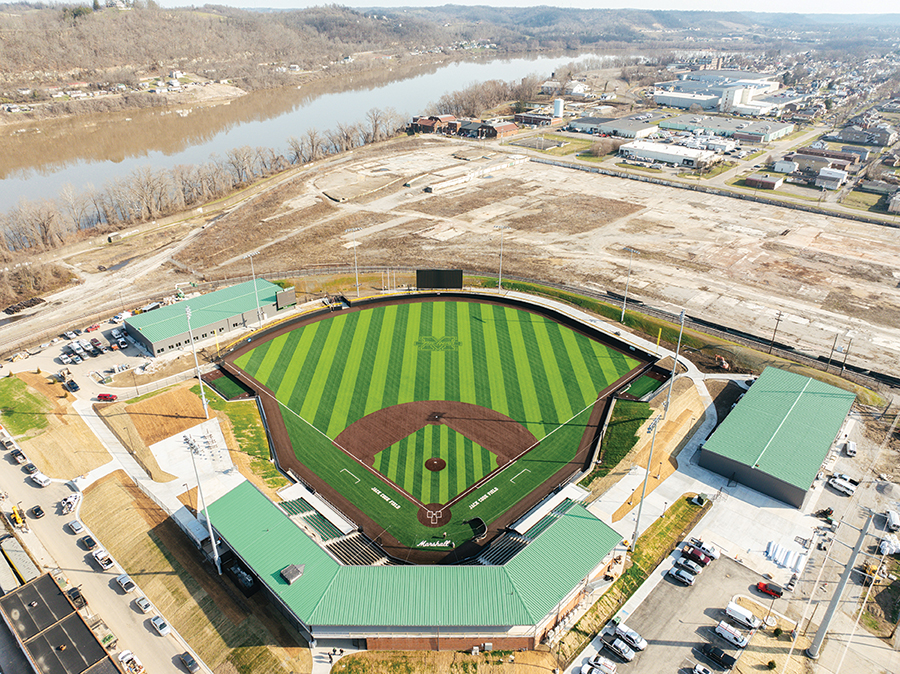
For Herd baseball fans, the completion of Jack Cook Field realizes a decades-long dream of having a home baseball stadium. Opened in March, Jack Cook Field is certainly the “stuff that dreams are made of” complete with coaches’ offices, meeting rooms, locker rooms, a players’ lounge and 1,200-plus seats for fans. A day at the ballpark is a day well spent.
Did you know?
Jack Cook, for whom the field was named, served as coach of the Marshall baseball team briefly in 1955 and then a second time for 22 years, from 1967-1989. He led the team to the NCAA championship tournament in 1973 and again in 1978.
Joan C. Edwards Stadium
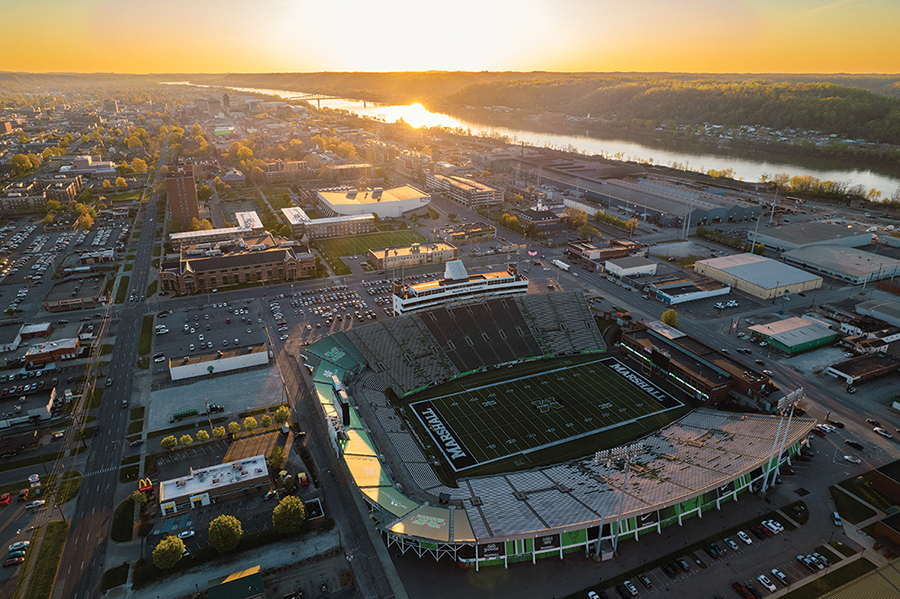
The home of the Thundering Herd football team, Joan C. Edwards Stadium opened in 1991 at the corner of 20th Street and Third Avenue, replacing Fairfield Stadium, which was a short walk from campus. The stadium seats over 30,000 people and features 20 deluxe indoor suites.
Outside the stadium is the We Are Marshall Memorial Bronze, a sculpture which sits on the west side of the exterior. Unveiled in November 2000, the 17-by-23-foot statue was created by artist Burl Jones of Sissonville, West Virginia.
Did you know?
One of the stadium’s newest and most striking features is its scoreboard, which is 38 feet tall and 97 feet wide, making it one of the largest in the nation.
Memorial Student Center
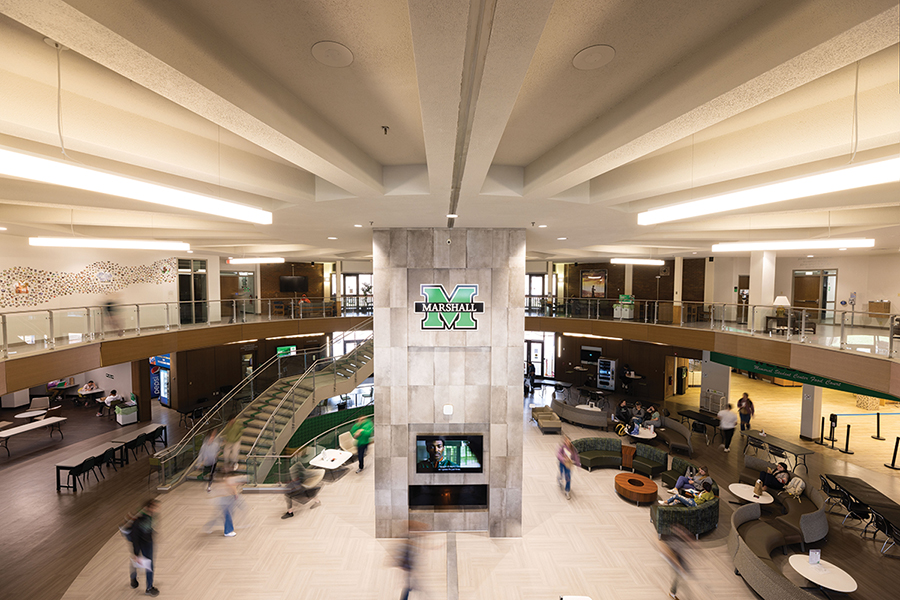
If you spent time on campus at any point since the 1970s, then you know the Memorial Student Center has been the hub for student activity for decades. What you may not know is nearly five years ago the student center received a renovation, complete with new furnishings, floorings and lights, a new fireplace, and lastly, a floating staircase that connects all three floors of the building.
The Memorial Student Center replaced the original Shawkey Student Union, which had been constructed in 1933 for $25,000 and named for then-Marshall President Morris P. Shawkey. The current student center has a conference room named in his honor.
Did you know?
From the 1970s through mid-1980s, the basement of the Memorial Student Center housed Marco’s, a place where faculty, staff and students could hang out and have a beer, eat and enjoy local and national entertainers, including bands and comedians such as “Carrot Top.”
Hal Greer Statue at Cam Henderson Center
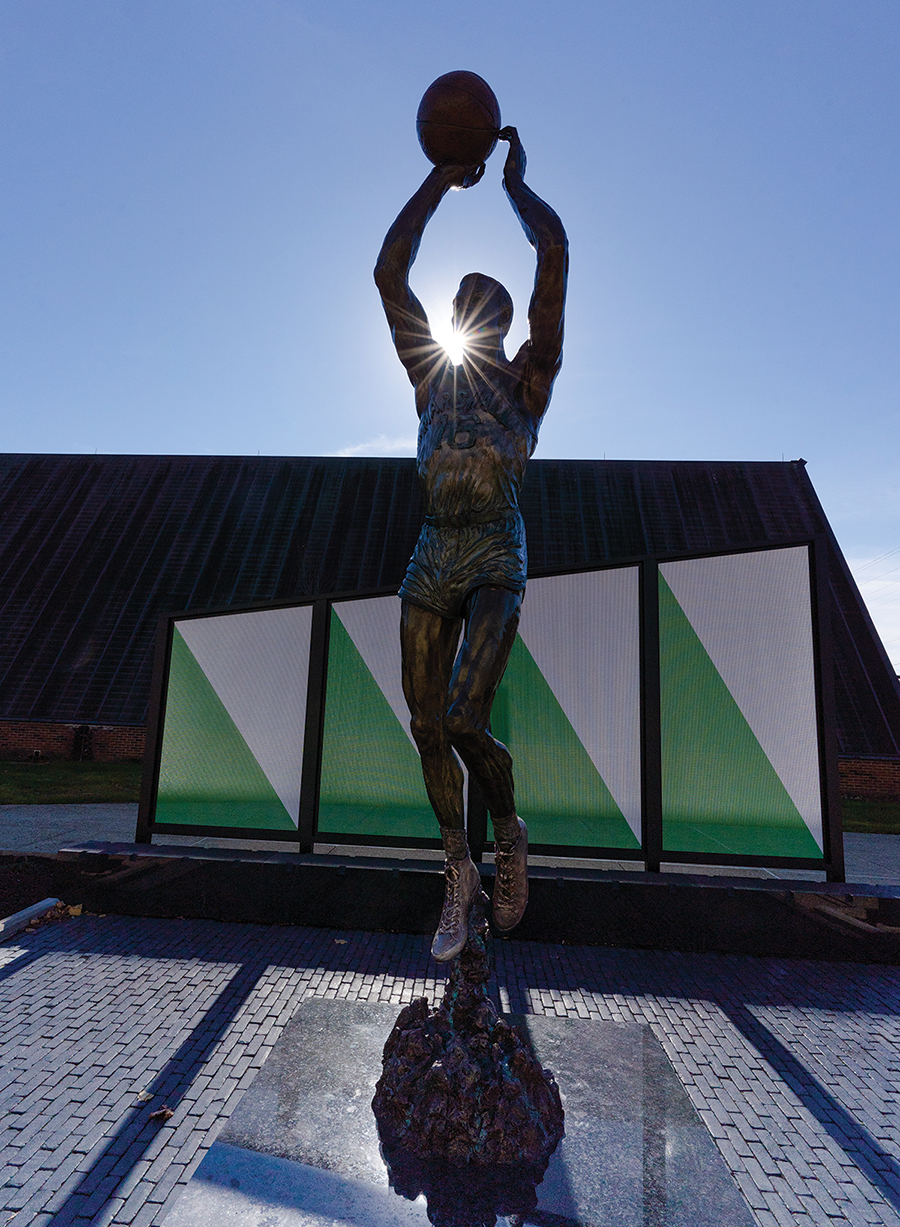
Harold Everett “Hal” Greer, one of the most revered players to ever step on a basketball court, began his playing career at Marshall in the 1950s, leading Marshall to a Mid-American Conference Championship. He then went on to have a successful career in the NBA and is listed in the Basketball Hall of Fame. He played for the Syracuse Nationals followed by the Philadelphia 76ers, a team that retired his No. 15 jersey. He was a 10-time NBA All-Star. In October 2021, a nearly 8-foot bronze statue of Greer, sculpted by Huntington native Frederick Hightower Sr., was unveiled along Third Avenue and 18th Street outside of the Cam Henderson Center, home to Marshall’s basketball arena.
Did you know?
Greer grew up in Huntington and played basketball for Douglass High School, the city’s all-Black high school. In coming to Marshall, he was the first African American to play basketball for a public college in West Virginia. That first year at Marshall, in 1954-55, he was coached by legendary Coach Cam Henderson, who is the namesake of the facility that houses Herd Basketball.
Arthur Weisberg Family Applied Engineering Complex
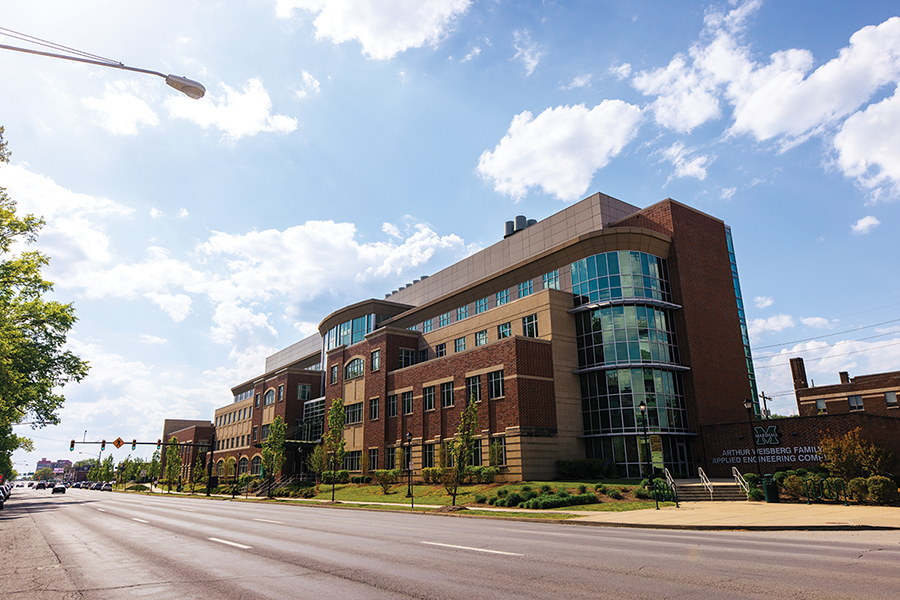
Opened in 2015, the Arthur Weisberg Family Applied Engineering Complex is the home of the College of Engineering and Computer Sciences and Marshall University Research Corporation. Currently home to some of the university’s computer science and cybersecurity lab space, it also gives Marshall engineering students first-rate facilities in which to learn. The WAEC has designated spaces for the following labs: the Advanced Materials Testing Lab, Environmental Lab, Thermal Engineering Lab, Hydraulics and Pneumatics Lab, Fluids and Hydraulics Lab, Controls and Instrumentation Lab, Industrial Controls Lab, Circuits and PLC Lab, and a Machine Shop.
Did you know?
In 2016, the building earned a LEED© Gold certification for its implementation of sustainability initiatives. It was the seventh building in West Virginia to do so and the first at Marshall University. More than 95% of stormwater runoff generated from the average annual rainfall is captured, treated and slowly released. Stormwater collected from the roofs is used for teaching and research projects and is recycled for one of the restrooms in the building.
East Hall
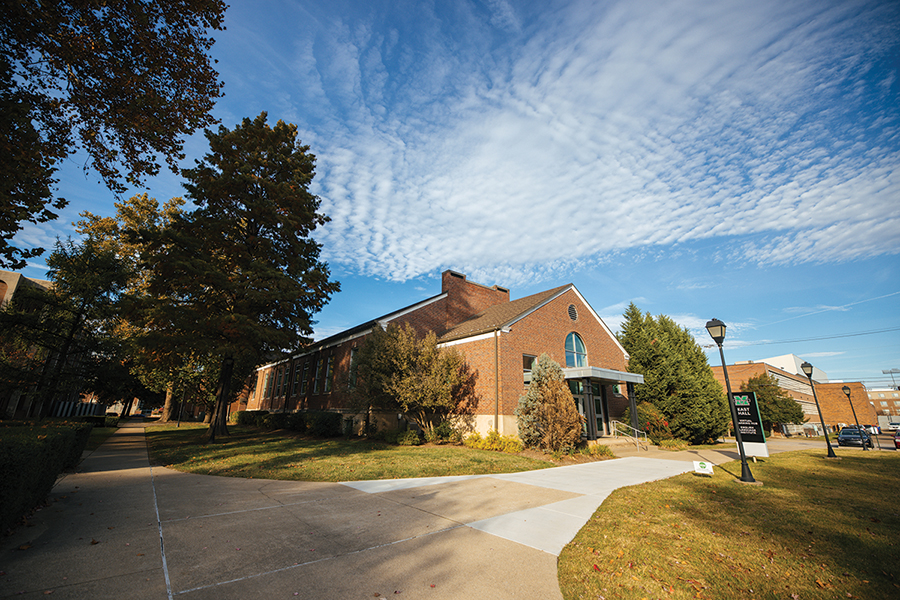
Home to the Center for Student Success and the English Language Institute, East Hall provides a safe, open and welcoming space to students from all walks of life. A popular hub and hangout for international students, East Hall is also home to the Intercultural Center, which in 2022 provided a renovation to East Hall and offered space for the LGTBQ+ Office, as well as the Center for African American Students and the Center for International Student Affairs. In addition to providing services to students, East Hall hosts several cultural events.
Did you know?
East Hall has space that is available to any club on campus. Marshall is home to over 200 clubs and organizations, and new clubs and organizations that form can find meeting space in the basement of East Hall.
Marshall Recreation Center
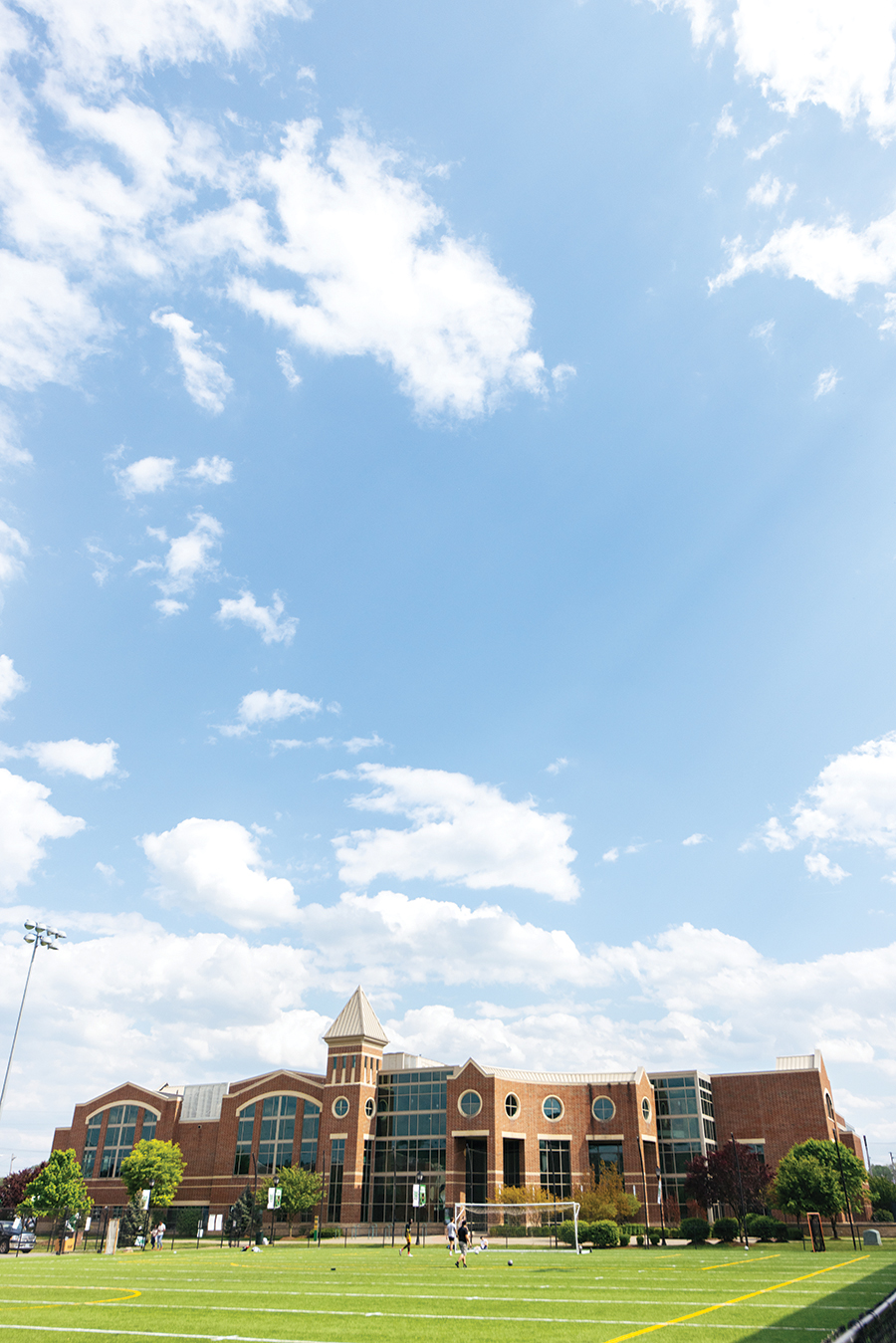
The Marshall Recreation Center, which opened in 2009, offers a multitude of health and wellness activities for students, faculty, staff and community members
Eastern Gray Squirrel
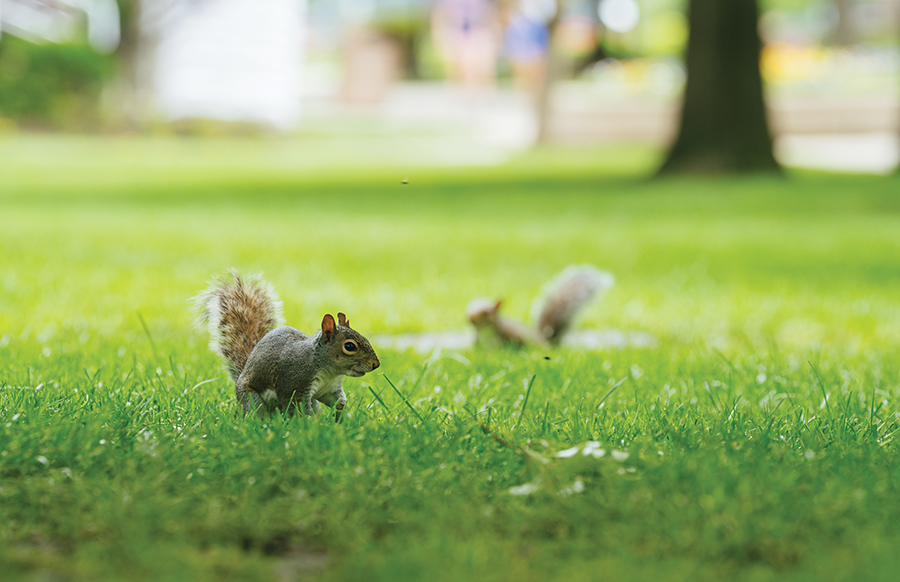
Through the years, one of the mainstays on the Marshall University campus is the Eastern Gray Squirrel, or Sciurus Carolinensis. The lovely, long-standing trees across campus provide the squirrels shelter and the bulk of their diet, including acorns and other nuts, buds and tree flowers, but Marshall squirrels can also be found munching on an occasional treat shared by a human friend. They’ve been spotted enjoying spare Cheetos or Chick-fil-A waffle fries found here or there.
Did you know?
Campus squirrels have their own Instagram page. See photos and follow their antics: @the_thundering_squirrels.
In town for the fountain ceremony or another Marshall event and want a guided tour of campus? Go to marshall.edu/visit for more information. Want to explore Marshall on your own? Check out the self-guided tour option to learn about even more campus favorites.

